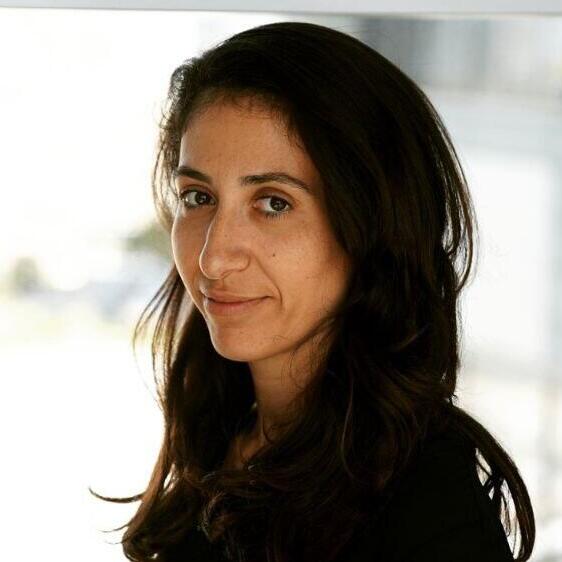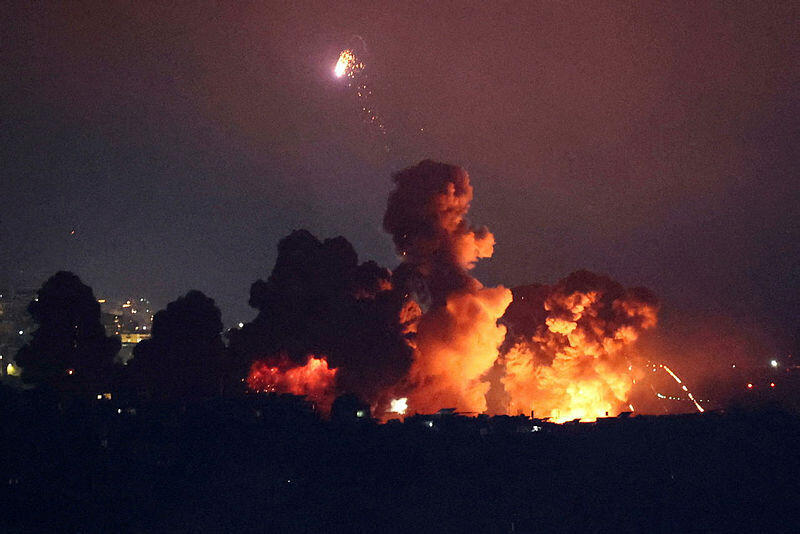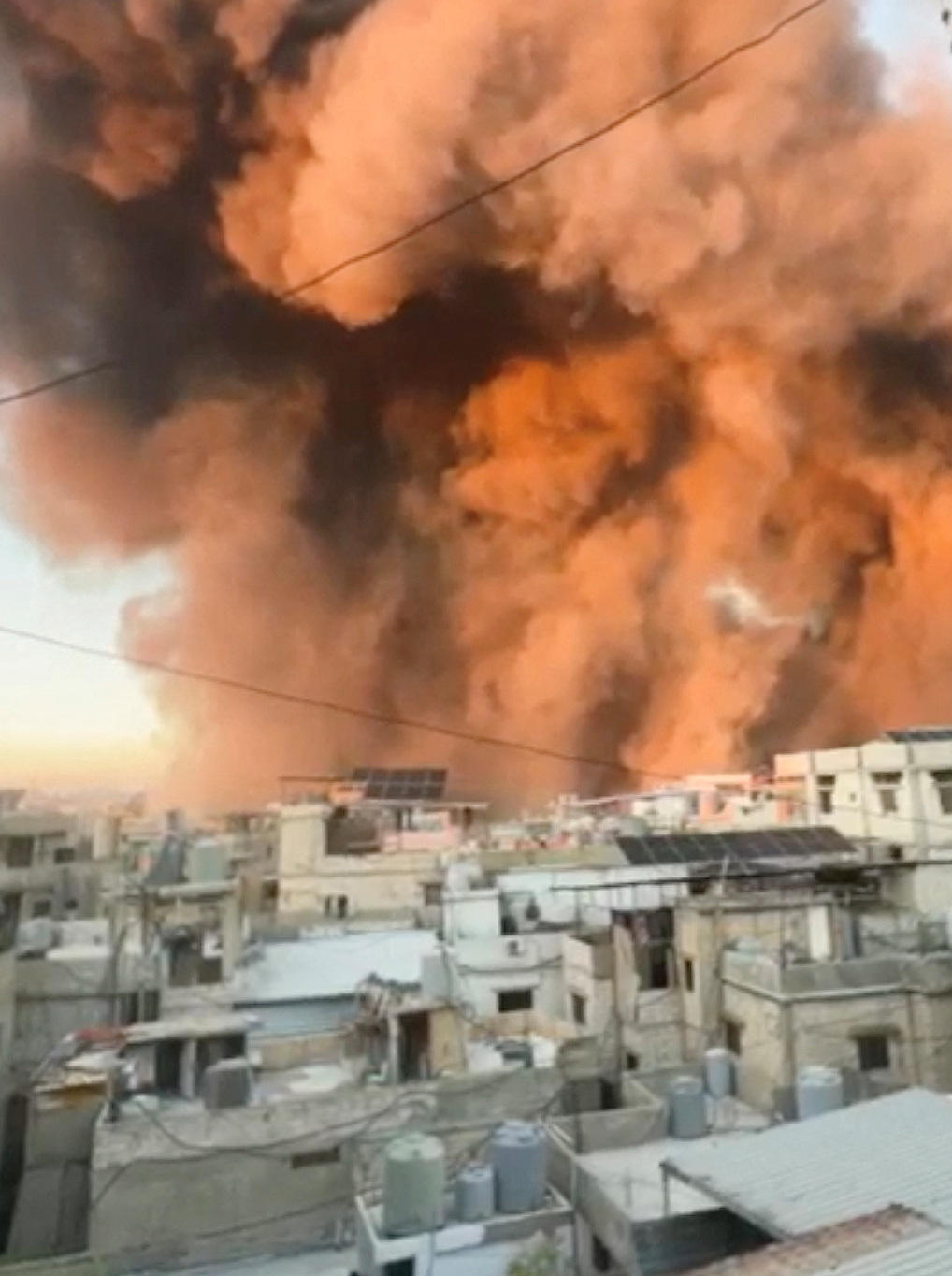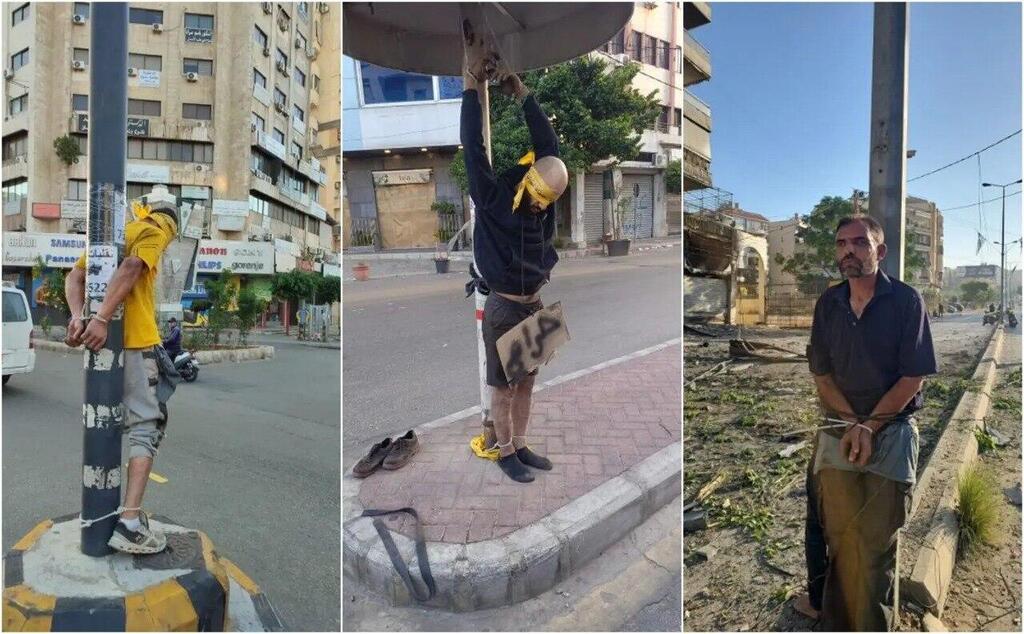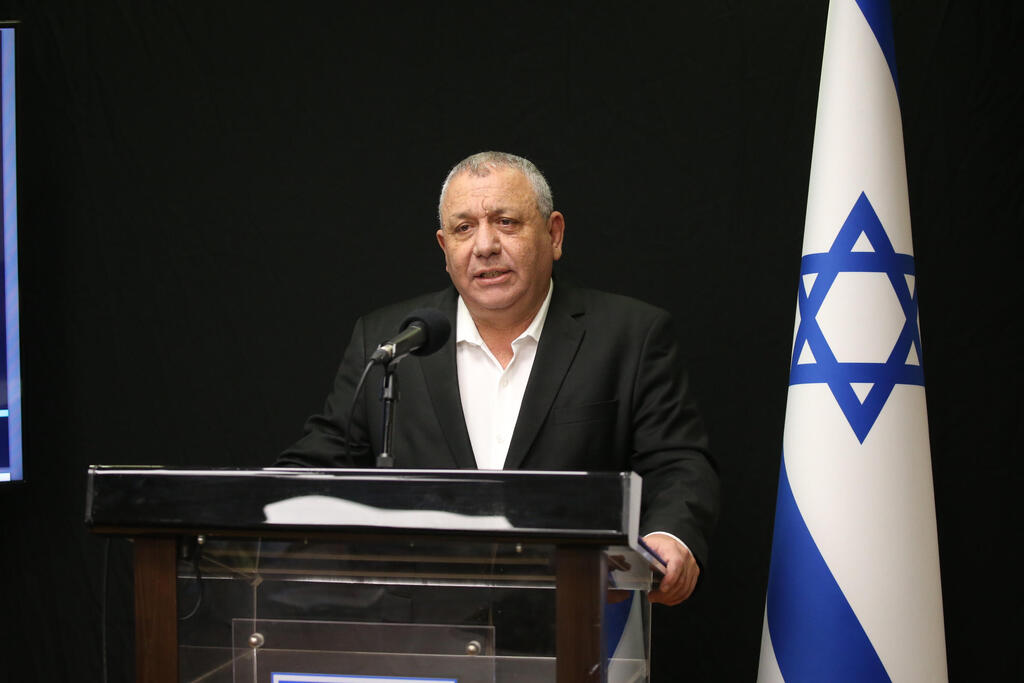In Beirut's Dahieh district, once a Hezbollah stronghold, the Lebanese Shiite militant group displayed a formidable presence and tight control. It was here that Hezbollah concealed armaments and established key command centers, believing the area to be a safe haven. However, recent weeks have seen intensified Israeli Defense Forces (IDF) strikes, transforming Dahieh from a significant bastion into a battlefield.
Initially, during the early months of the conflict, strikes on Dahieh were rare and typically reserved for high-profile targets. Yet, in the past month and a half, the IDF has launched almost daily attacks, often multiple times a day. IDF has long regarded Dahieh as a central hub of Hezbollah's terrorist activities. A military spokesperson said that "this is where Hezbollah makes its decisions and produces and hides its strategic weapons—inside and beneath civilian structures in Dahieh."
Aftermath of Israel's strike on the Dahieh
Amid the extensive attacks and the residents' growing realization that the intensity would only increase, many are fleeing Dahieh, moving northward to areas not yet reached by IDF strikes. For some, this marks their second or even third displacement. Families who initially evacuated from border villages in southern Lebanon sought refuge in areas then deemed safer, such as Tyre, Sidon, Nabatieh, and Dahieh in Beirut. However, as the conflict progressed, these regions too became unsafe, prompting families to move northward again.
The situation is even more complex for most of the displaced from Dahieh. The district's population is predominantly Shiite, and not all regions in Lebanon are willing to accept them because of the perceived risk associated with their support for Hezbollah. Recently, videos from Tripoli in northern Lebanon showed residents removing stickers with images of Nasrallah and Hezbollah activists from the cars of displaced people.
The growing intensity of the strikes has led to the killing of high-ranking officials, bringing the "Dahieh Doctrine" back into focus. In recent weeks, top Hezbollah leaders, including Hezbollah chief Hassan Nasrallah, have been targeted in Dahieh.
6 View gallery


Crowds gather outside a Dahieh hospital after a coordinated explosion of communication devices
(Photo: Mohamed Azakir / Reuters)
Many were killed while hiding beneath civilian complexes. Israeli forces also destroyed large weapons caches, including advanced precision surface-to-sea missiles, also hidden in the area. It appears that if Hezbollah leaders had anticipated immediate danger, they would have fled promptly. However, the results of the strikes suggest that Hezbollah underestimated Israel's intelligence penetration into its ranks, unlike during the Second Lebanon War in 2006.
The intensified strikes in Lebanon raise another issue first presented after the Second Lebanon War: Is this new phase of combat indicative of implementing the "Dahieh Doctrine," introduced in 2008 by then commander of the northern front and now lawmaker Gadi Eizenkot? This doctrine involves disproportionate use of aerial and artillery fire against civilian infrastructures used by terrorist organizations, primarily Hezbollah.
"Each of the Shiite villages is a military site. Dozens of rockets are stored in basements and attics. Dozens of local activists and fighters from outside are prepared for defense battles and missile fire toward Israel," Eizenkot said at the time. "We know Hezbollah will fire much more broadly than in the last war, and we will respond accordingly. Any village from which fire is directed at Israel will be subjected to disproportionate force, causing massive destruction."
And in recent days, 16 years after Eizenkot's remarks, it seems this is being implemented. Images and videos from southern Lebanon's villages in recent times, and occasionally even from specific areas in Dahieh, indicate unprecedented destruction in the streets. The villages, under fire for months, have emptied of residents, with those who didn't leave at the war's outset deciding to evacuate in recent weeks as the attacks intensified.
That said, ever since the Second Lebanon War, IDF's intelligence and offensive capabilities have developed, allowing for much more focused operations. Even the attacks in Dahieh, though intense, are target-oriented and purposeful.
"In 2006, IDF essentially had no targets. Our capabilities against Hezbollah were relatively limited, and the fact is we didn't eliminate any of their commanders. Certainly not a leader or senior commander," said Professor Eyal Zisser, an expert in the modern history of Lebanon and Syria and vice-rector at Tel Aviv University. "The attacks were more about locations, assets, not something precise. We didn't know where their weapons were; it was very unfocused and imprecise. The result was also significant environmental destruction."
"Today, first of all, after Gaza, we're more cautious, and secondly, we have good intelligence, so we're more focused," he added. "There's destruction, and people have fled, but I wouldn't compare the scale of the destruction. We also see that the IDF spokesperson's announcements are about very focused things. It's not about systematic and widespread destruction of Dahieh. There is destruction, but I wouldn't say it's like 2006. Maybe we'll get there. Israel is trying and can, thanks to quality intelligence, be more focused."
Professor Zisser noted that for Hezbollah, this isn't a different war from 2006. "It's not a different war in the sense that they continue to fire. There are aspects of our ability to hit their assets and commanders, that's true, but essentially they are firing at Haifa like in 2006," he said.
A ghost town where thieves are brutally punished
Orna Mizrahi, former Deputy Head of Israel's National Security Council and now a senior researcher at the Institute for National Security Studies, suggests that we may not fully understand the intentions for Dahieh until the war concludes. "The current situation involves numerous targeted strikes, with reports of about seven attacks per day, each hitting multiple buildings and causing significant damage," she explained.
"While it’s uncertain if Dahieh will face total destruction, similar circumstances might unfold. The IDF's operations today are very focused, often employing bunker-penetrating bombs," Mizrahi said. "Dahieh likely has an underground network, making comparisons to 2006 challenging. We are still in the early stages."
Contrary to the "Dahieh Doctrine," which involves "using disproportionate force and causing massive destruction," Mizrahi believes the current strikes aim not to obliterate the area. "The strikes are currently precise, targeting assassinations, warehouses, ammunition stockpiles, and industrial facilities," she explained.
Destruction in Dahieh
Commenting on the chaos in Dahieh, she added, "Many residents have left. A Lebanese journalist described it as a ghost town. Previously, Hezbollah maintained strict control, deterring thieves and criminals, which provided a sense of security. Now, those returning to check on their property after evacuating have found they were robbed. It has become a lawless zone," Mizrahi said.
Recent images and videos from Dahieh show thieves caught looting abandoned homes. They were hanged or tied to poles, injured and bleeding. Social media posts claim Hezbollah is responsible for these severe punishments, highlighting the breakdown in governance and the prevailing chaos in Dahieh. One user who shared images of the thieves wrote, "Soon, the same fate will come to the collaborators from within."
The strategic position in Dahieh - and why Hezbollah leaders stay
Dahieh, once home to agricultural villages near Beirut, saw a population surge in the 1950s from southern Lebanon and the Bekaa Valley due to poverty and employment needs. These villages expanded into suburbs, becoming part of Beirut.
"Dahieh is a suburb that began as villages outside Beirut, which merged to become part of the city," Mizrahi explained. "Interestingly, Lebanon's main airport, Rafic Hariri Airport, is located in this neighborhood, adjacent to Dahieh, allowing Hezbollah to control what happens there."
Recently, there were proposals in Lebanon to establish another airport, but Hezbollah strongly opposed this. "Hezbollah wanted everyone to continue using Rafic Hariri Airport to prevent it from being seen solely as a Hezbollah stronghold," she explained. "As long as all Lebanese use it because it’s the only airport, it remains general Lebanese infrastructure rather than a Hezbollah target."
Nasrallah was killed there, alongside other key figures like Saleh al-Arouri and Fuad Shukr. Reports indicate that senior Hezbollah figure Hashem Safieddine, marked as Nasrallah's successor, was also confirmed dead in Dahieh.
Residents of the district reacted strongly to Nasrallah's assassination, with hundreds spontaneously protesting in Dahieh's streets. Reports from Al Arabi and Asharq Al-Awsat describe Lebanese citizens crying and collapsing, and a sense of confusion prevailing after the assassination.
Despite these high-profile eliminations, none of the senior figures have fled Dahieh. The simple reason is they have nowhere else to go. Professor Zisser explained, "They can't move to a Christian neighborhood as they would be reported immediately, so they stay with the Shiites. Their plans didn't work out well," he added. "They prepared for a different kind of war, expecting it to be more limited and less intense, thinking we wouldn't attack Dahieh and they wouldn't fire on Tel Aviv."
Mizrahi also believes that "their options are likely limited." She stated, "The main issue is they haven't realized the extent of their exposure to Israeli intelligence. They don't understand how infiltrated they are, so they continue to believe they can hide. The fact they haven't convened to appoint Hashem Safi al-Din as secretary-general isn't coincidental. Perhaps they feared such a gathering."
"In addition, it seems he feared that once appointed, he would become a target, but he didn’t realize that even as a candidate, he’s a target," Mizrahi said. "There are probably places they believe to be safe. It’s a vast area. They still need to hold meetings and gather somewhere. Besides, where else could they go besides leaving Lebanon? Dahieh is the center, the headquarters, everything."
Hezbollah is down, but not out
The psychological blow to Hezbollah in recent weeks is substantial. The organization is confused, as seen in its recent activities, but it remains operational. "There's no doubt they've suffered a setback, but they continue to function. They keep firing. It's a large organization. You've cut off the strategic head, but those firing at Kiryat Shmona continue," said Professor Zisser.
Mizrahi added, "The current war has achieved remarkable gains. The intelligence penetration, developed over the years, combined with the Air Force's operational capability to conduct precision strikes with bunker-penetrating bombs, allows for much more accurate attacks." She noted, "Attention should also be paid to the relatively limited collateral damage. The major concern I recall from this war was about the extent of collateral damage. Overall, it is relatively limited because the strikes are precise."
Recently, the issue of Nasrallah's burial has also arisen, with a Hezbollah source claiming last week that he was secretly buried in a temporary location. However, according to Mizrahi, the reason no funeral has been held yet is that they are "afraid to conduct it." She added, "There were discussions about whether he might be buried in Lebanon or not. There is also uncertainty about how he was killed, whether from the strike or gas at the site. It was also said he was temporarily buried, intending that when times change, he will be properly interred. There’s a lot of confusion around Nasrallah's burial, also out of fear that Israel could use it as an opportunity to attack."
Get the Ynetnews app on your smartphone:
Google Play: https://bit.ly/4eJ37pE
Apple App Store: https://bit.ly/3ZL7iNv


